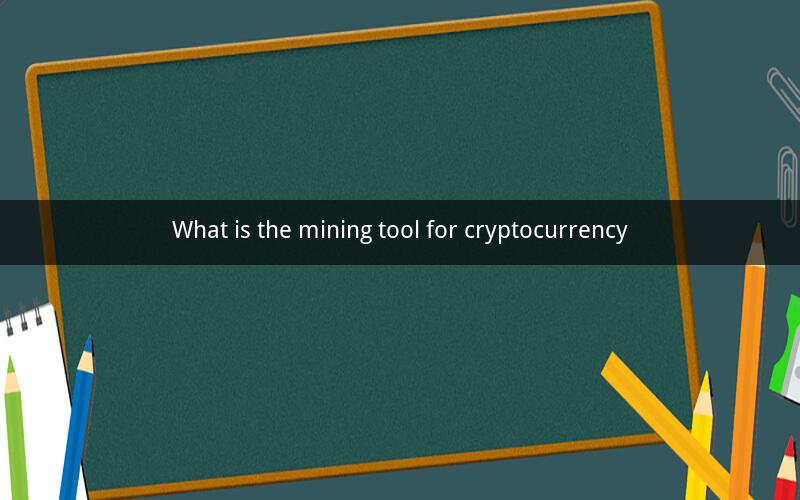
Cryptocurrency Mining Tools: A Comprehensive Guide
Table of Contents
1. Introduction to Cryptocurrency Mining
2. The Role of Mining Tools in Cryptocurrency
3. Types of Cryptocurrency Mining Tools
- Hardware Mining Tools
- Software Mining Tools
- Cloud Mining Tools
4. How to Choose the Right Mining Tool
5. Benefits of Using Cryptocurrency Mining Tools
6. Risks and Challenges of Cryptocurrency Mining
7. Conclusion
1. Introduction to Cryptocurrency Mining
Cryptocurrency mining is the process of validating and adding new transactions to a blockchain. It is an essential component of the cryptocurrency ecosystem, as it ensures the security and reliability of the network. Miners are rewarded with cryptocurrency for their efforts, making it an attractive venture for many.
2. The Role of Mining Tools in Cryptocurrency
Mining tools are essential for cryptocurrency mining, as they facilitate the process of solving complex mathematical problems required to add new blocks to the blockchain. These tools can range from simple software applications to specialized hardware designed for optimal performance.
3. Types of Cryptocurrency Mining Tools
3.1 Hardware Mining Tools
Hardware mining tools are designed to perform the intensive calculations required for cryptocurrency mining. They come in various forms, such as Application-Specific Integrated Circuits (ASICs), Graphics Processing Units (GPUs), and Field-Programmable Gate Arrays (FPGAs). Each type of hardware has its strengths and weaknesses, making it crucial for miners to choose the right tool for their specific needs.
3.2 Software Mining Tools
Software mining tools are applications that allow miners to utilize their computers' processing power for mining. These tools are typically user-friendly and can be used with a variety of hardware configurations. Some popular software mining tools include CGMiner, BFGMiner, and EasyMiner.
3.3 Cloud Mining Tools
Cloud mining tools allow miners to mine cryptocurrency without the need for physical hardware. Users can rent computing power from a cloud mining service provider and pay for the electricity and maintenance costs. This approach is convenient for those who prefer not to invest in hardware or manage the equipment themselves.
4. How to Choose the Right Mining Tool
When selecting a cryptocurrency mining tool, miners should consider several factors:
- Performance: Look for tools with high hash rates and energy efficiency.
- Cost: Evaluate the initial investment, maintenance costs, and electricity expenses.
- Compatibility: Ensure the tool is compatible with your hardware and software setup.
- Reliability: Choose a reputable provider with a good track record in the mining community.
5. Benefits of Using Cryptocurrency Mining Tools
- Increased Chances of Mining Success: Effective mining tools can significantly increase your chances of finding a block and earning rewards.
- Efficiency: Optimized tools can reduce energy consumption and improve overall efficiency.
- Accessibility: Software mining tools are user-friendly and can be used on various devices.
6. Risks and Challenges of Cryptocurrency Mining
- High Costs: The initial investment, maintenance, and electricity expenses can be substantial.
- Market Volatility: The value of cryptocurrencies can fluctuate dramatically, impacting your earnings.
- Regulatory Risks: Governments may impose restrictions or bans on cryptocurrency mining, making it illegal in certain regions.
7. Conclusion
Cryptocurrency mining tools play a crucial role in the mining process, enabling miners to efficiently solve complex mathematical problems and contribute to the blockchain. By understanding the different types of mining tools and their benefits, miners can make informed decisions and maximize their chances of success. However, it is essential to consider the risks and challenges associated with mining before diving into this venture.
Related Questions and Answers
1. What is the difference between ASICs and GPUs in cryptocurrency mining?
- ASICs are specifically designed for mining and offer higher hash rates than GPUs. However, GPUs are more versatile and can be used for other tasks, such as gaming and video editing.
2. How can I choose the best software mining tool for my needs?
- Consider factors such as ease of use, compatibility, and community support when selecting a software mining tool.
3. What are the advantages of cloud mining over traditional hardware mining?
- Cloud mining eliminates the need for physical hardware and maintenance, allowing users to mine without the initial investment or electricity expenses.
4. How can I ensure my mining rig's energy efficiency?
- Optimize your mining rig's hardware, use energy-efficient cooling solutions, and choose a power supply with high efficiency ratings.
5. What are the risks of investing in cloud mining services?
- Risks include the potential loss of investment, lack of control over hardware, and reliance on the cloud mining service provider.
6. How can I stay updated on the latest mining tools and technologies?
- Follow cryptocurrency mining forums, social media platforms, and attend mining conferences to stay informed about the latest trends and innovations.
7. What is the difference between Proof of Work (PoW) and Proof of Stake (PoS) mining?
- PoW requires miners to solve complex mathematical problems, while PoS allows validators to be chosen based on the number of coins they hold.
8. How can I determine the profitability of my cryptocurrency mining operation?
- Use mining profitability calculators to estimate your potential earnings based on factors such as hardware costs, electricity expenses, and current market conditions.
9. What are some common scams in the cryptocurrency mining industry?
- Be cautious of Ponzi schemes, fake cloud mining services, and phishing attacks targeting mining hardware and software.
10. How can I protect my mining rig from hardware failures and cyber attacks?
- Regularly update your mining software, use robust antivirus software, and store your cryptocurrency in secure wallets.